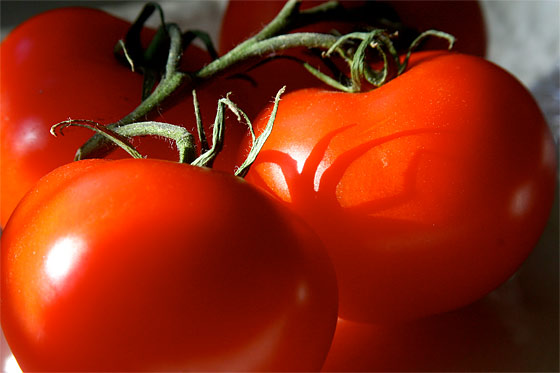Tips For Growing Tomatoes

The fresh home-grown tomato. A succulent tasty summer delight! It is THE most common vegetable grown in backyard gardens, and that means that most all of you have some experience with growing tomatoes yourselves…
Recently one of our articles developed a tangential comment thread on tomato tips and advice. I thought that I would capture those comments here, enabling the opportunity for those who happen across this article to comment with your own tips for growing tomatoes. Maybe the lessons learned, the do’s and not to do’s, the things that have worked for you while growing your own tomato plants…
In no particular order:
Tomatoes thrive on neglect. The less you baby them, the happier they are.
Blossoming and fruit set are temperature dependent. Fruit set will take place when night-time temperatures are between sixty and seventy degrees. If that is two weeks in the spring, that’s what you get. That’s why you also get another crop in the fall, after temperatures have dropped.
Ripening is triggered by a lot of things, including temperature (heat) and chemicals in the air from decaying vegetation. It can also be triggered by damage to the plant (thus, the idea of stomping or breaking your plants).
The size of your tomatoes is likely going to depend on the circumstances in your garden. If you have a lot of decaying vegetation (i.e., mulch, or thick, heavy nutrient rich soil) they’re going to ripen sooner and won’t get as big.
Mulch around your plants will make the plants go all green and no fruit. Nitrogen fertilizer, ditto. Too much water, ditto.
The best I’ve found is to dump them in the ground and walk away.
I put some eggshells around the seedlings to keep the snails away, and cover them if it gets too cold before they’re established.
Put a calcium tablet under each plant/seed
Pour a can of beer over roots once growing
Put a piece of raw pumpkin under each plant/seed
Consider a test. Plunk a few down where your soil hasn’t been amended yet and let it go. Put a few where the soil is OK but not great. Plant the rest wherever you would normally plant and see which does the best. Then next year plant accordingly.
Try Epsom salt sprinkled around base of your tomato plants every other week during the growing season . they love the magnesium.
For tomatoes we mix compost into our soil every year to replenish it. Then we cover the tomato area with black plastic (contractor trash bags cut open work great because they’re heavy), cut a hole where each tomato plant goes and viola! We do have a soak hose system underneath the plastic for watering, but the plastic keeps the soil warmer, and tomatoes need/love warm soil. That’s all we do and, trust me, we get more tomatoes than we can keep up with sometimes. Like 50 lbs per day, every other day.
Crush up egg shells and put them in the planting holes. I use about 1 tablespoon in the hole per plant.
We have to put 3 small thin 3 inch stakes cut from Popsicle sticks around the base of the plants to keep the cut worms from destroying the plants. The one’s they cut down only had two stakes.
Put TP rolls around the tomatoes to act as a collar. Cutworms are usually in the top 1/4 to 1/2 inch of soil
Find a tomato variety that grows well for your area and stick with that variety and maybe experiment with a couple new varieties each year.
Acid levels. Low acid varieties of tomatoes are a smorgasbord for bugs.
Also, the old folk-lore of planting French marigolds around the garden actually works. They have the substance that repels pests in their root system.
Beneficial Companion Plants for Tomatoes
Books on Tomatoes:
Epic Tomatoes: How to Select and Grow the Best Varieties of All Time
The Heirloom Tomato: Recipes, Portraits, and History of the Most Beautiful Fruit
Carrots Love Tomatoes: Secrets of Companion Planting for Successful Gardening
Okay, let’s hear your tips on growing tomatoes:
(After awhile I will update the list above to add in your new tomato tips)
